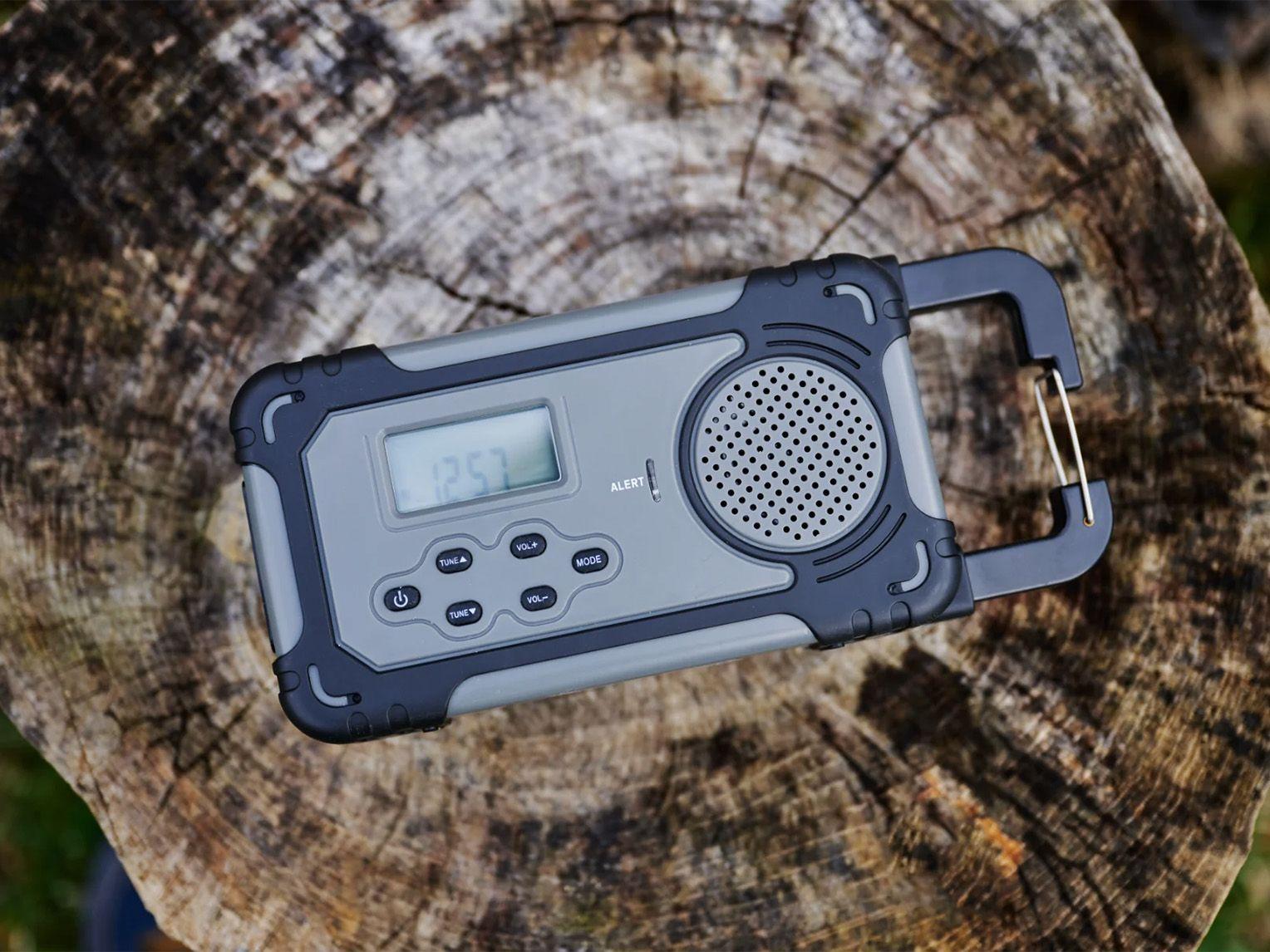Radio Frequencies You Need to Know for Emergencies

I can’t recall the last time I saw a bug-out bag list that did not include an emergency weather radio. It’s a crucial item, and that’s why we at 4Patriots make one available to our customers.
Extreme weather alerts have saved lives on many occasions. Sometimes those warnings have come from a television or a standard radio. Or perhaps through a frantic call from a friend or loved one. Or from a siren.
More often those alerts have come through emergency radios. And they’ve arrived prior to media coverage of weather emergencies.
Sometimes just those two or three minutes can make the difference between life and death for anyone facing an immediate weather crisis.
NOAA emergency radio
Your best bet with an emergency radio is a National Oceanic and Atmospheric Administration (NOAA) radio.
NOAA is a government-operated administration that sends out broadcasts every five minutes 24/7/365 related to storms. Including tornadoes, hurricanes, and blizzards, as well as solar flares, nukes and other major problems.
Here is a list of NOAA emergency radio frequencies:
- 163.275
- 162.55
- 162.525
- 162.50
- 162.475
- 162.45
- 162.425
- 162.40
Following is a list of other emergency radio frequencies you may need at one time or another:
- 163.5125 – Military national disaster preparedness frequency
- 163.4875 – National Guard emergency communications frequency
- 156.80 – International maritime distress channel
- 156.75 – International maritime weather alerts
- 155.475 – Emergency communications for police
- 155.160 – Used by various agencies during search and rescue operations
- 154.295 – Used by firefighters during emergencies
- 154.28 – Used by firefighters during emergencies
- 154.265 – Used by firefighters during emergencies
- 138.225 – Disaster relief channel used by FEMA
- 121.50 – International frequency for aeronautical emergencies
- 47.42 – Nationwide Red Cross channel during humanitarian aid missions
- 39.46 – Inter-department emergency communications by police
- 34.90 – Nationwide National Guard frequency during emergencies
Ham radio
You don’t need a license for CB radio usage, but you do need one for ham radios.
It’s an effective way to communicate when other sources are down in an emergency. Not to mention a fun hobby.
Ham radio (also called amateur radio) has its advantages over other communication forms, but it requires some study. And you need to pass a license exam.
A total of 26 frequency bands are used for ham radio. It provides long hours of communication during emergency situations.
It can be used for experiments with easy configurations anywhere. And it can be interfaced with computers for data transmission and reception. Believe it or not, ham radio operators can even communicate with astronauts at the space station.
On the downside, ham radio operations can be affected by weather and terrain conditions. And ham radios require a power source.
Cellphones and weather apps
Simpler but sometimes less reliable ways to receive alerts or communicate during an emergency are cellphones and weather apps.
Most cell phones have the Wireless Emergency Alerts (WEA) feature. It sends out a loud tone to warn you of an impending emergency.
These alerts work. Don’t disable them just because the screeching and beeping noises can be annoying. That’s so they will catch your attention. They are designed to only activate phones connected to a local cellphone tower.
There are a number of weather apps you can download onto your cellphone. They include Storm Shield, iAlert, AccuWeather and The Weather Channel. As well as weatherUSA, ping4alerts! and The Emergency Email & Wireless Network.
With Storm Shield, wherever you are, storm-based alerts are available. It does not use GPS, so it shouldn’t wear down your phone battery. iAlert provides weather warnings via text or email. You can select the alerts you want for any of 30,000-plus U.S. cities.
Ping4alerts! delivers alerts regarding weather, traffic and school closures. Plus natural disasters, power outages and more.
Liberty Band Radio
As discussed, a NOAA weather radio is a great way to learn about – and avoid – threatening weather.
Having access to critical information is key to surviving in any emergency.
4Patriots has created the ultimate tactical information hub. It’s the Liberty Band Emergency Solar Radio. This lightweight radio features NOAA weather alerts. And it recharges with the sun.
It has seven 24/7 weather channels and AM/FM and shortwave radio. Plus LCD display clock with alarm and an ultra-bright flashlight. It can even power your cellphone when you need it most.
Winter means snowstorms, blizzards and a variety of other severe weather. The Liberty Band will provide you with the advance notice you need to seek shelter.
References:
- All testimonials in this advertisement are from real people; sometimes names and photos have been changed to protect their privacy and some were given free products in exchange for their honest feedback. Testimonials represent exceptional results, don't apply to the average purchaser and are not intended to guarantee that anyone will achieve the same results. The organizations, publications and people referenced on this site are not affiliated with 4Patriots. They have not endorsed, sponsored or recommended this product; no affiliation or endorsement is claimed. Terms & conditions apply. Cade Courtley is a former Navy SEAL and Platoon Commander who served 9 years of active duty and has been compensated by 4Patriots for his hard work in helping us test and endorse this product. Cade Courtley is a former Navy SEAL who served 9 years of active duty and has been compensated by 4Patriots for his hard work in helping us test and endorse products.
